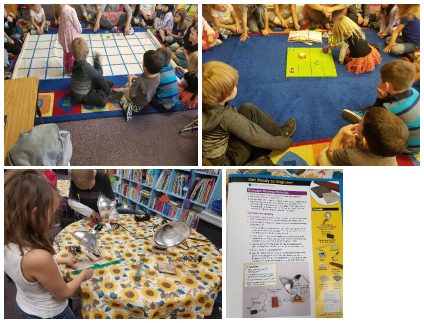K-5 STEM Grant Puts Hands in Hands-On Science
Principal Patrick Beckwith of Hugh Gallagher Elementary School in Virginia City was looking for a way to implement a schoolwide cohesive STEM program, one that incorporated an interdisciplinary and applied approach to learning. “We want students to achieve academically in the four areas of STEM, but also spark an interest in a STEM- oriented career,” he said.
When he heard about the K-5 STEM grant, he found STEM in Action from the STEM Advisory Council’s list of Recommended STEM Programs and received funding to purchase the program for his school.
Gallagher Elementary implemented the program in 2018. The results so far? “The hands-on learning has been a huge hit with the students so far,” Principal Beckwith reports. “They look forward to each unit of study and love to share what they learn.”
Ms. Karen Staffen used STEM in Action to introduce 4th graders to concepts of solar heat and apply those concepts to house design. The program “provides both the background knowledge for the teachers and open-ended and well-organized activities and structures for the students. They are engaging, easy to work with, and are well...fun to use,” she says.
Ms. KyLeen Davis’ kindergartners especially enjoyed learning to program with a Code and Go Robot Mouse they named Mimi. “STEM in Action has helped focus me as a teacher on what I am teaching,” she says. “There are so many ideas out there that having these kits make STEM seem easier to teach and engage the children.”
Research finds that early exposure to STEM, especially for girls, makes children more likely to succeed in science and pursue STEM fields in college. OSIT awarded K-5 STEM Grants to innovative applications that increase the use of evidence-based, hands-on, experiential STEM learning in grades K-5.

Top row images: Kindergartners first learned basics of programming, including sequencing. They “programmed” the movements of one of their classmates. Their next object was to program a path to get “Mimi Mouse” to the three things it needed to survive: food, water, and shelter, while avoiding danger (a cat).
Bottom row images: Students observed that the sun’s energy is absorbed into different materials at different rates.Students also observed that the heat energy from the sun varies, depending on the time of day and the angle that the sun’s energy hits the house.
 Download story as PDF
Download story as PDF